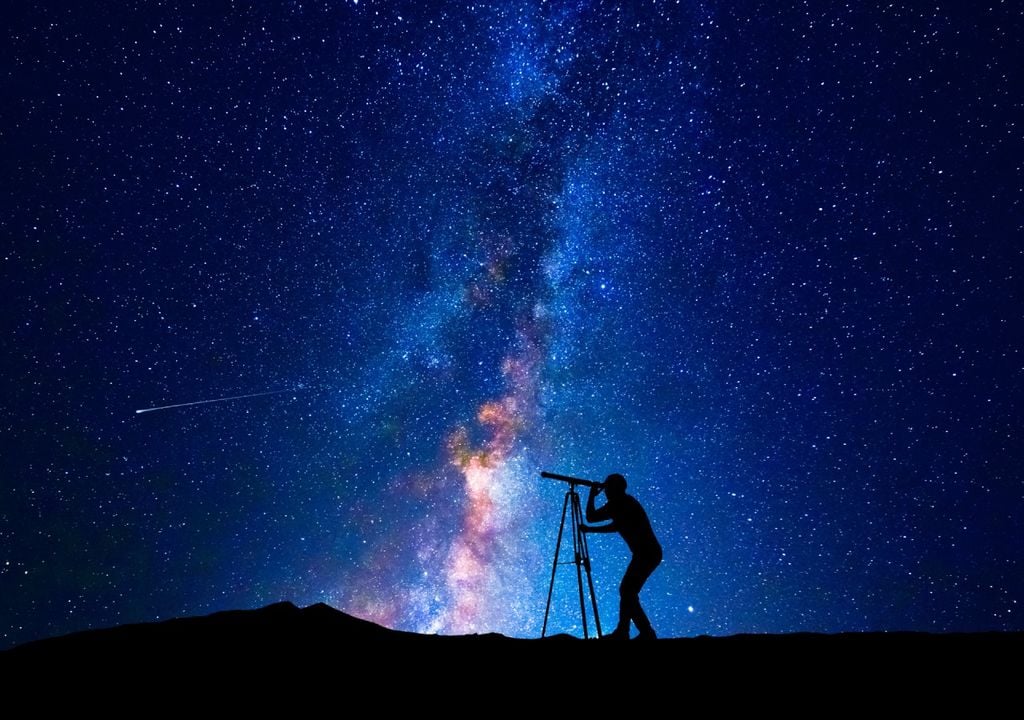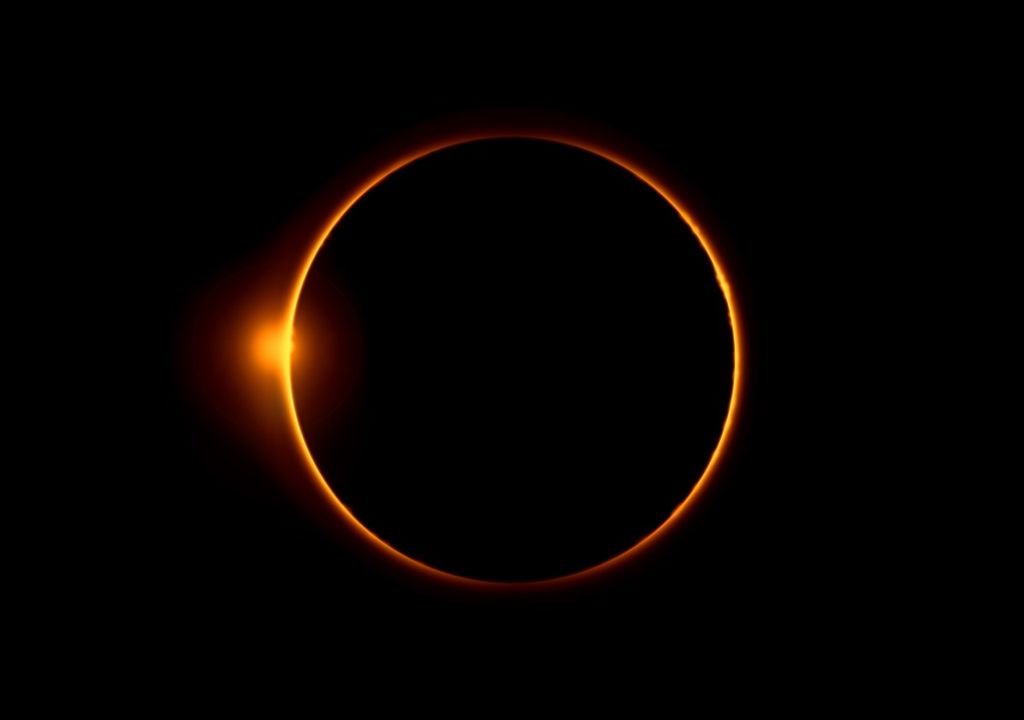Astronomical Phenomena of April 2024: Date of the Solar Eclipse, Meteor Showers and the Pink Moon
This month of April promises on an astronomical level. There will be a spectacular solar eclipse in some points on the planet, meteor showers and the Moon will dress in pink. We review the dates.

April is one of the most active months if we talk about astronomy. In just a few days there will be a solar eclipse, then two meteor showers will sneak in and, almost at the end, we will see the sky illuminated with the full moon. And if that were not enough, there will also be planetary conjunctions: on 11 April, Mars with Saturn and on 20 April, Jupiter with Uranus.
The date of the total solar eclipse
This eclipse is the second of the year. The first was the lunar penumbral on 25 March and now it's time to prepare for a total solar eclipse. The latter has two requirements: the first is that both the Earth and the Moon are perfectly aligned, something that only happens when there is a new Moon or full moon.
The second requirement is that both stars are also aligned with the Sun, something that happens less frequently, which is why solar eclipses usually create a lot of expectations. It will happen on 8 April and will be one of the most spectacular. The Moon will be between the Earth and the Sun in such a way that, for the Earthly viewer, our satellite will be the same size as the sun, completely covering it.

You can enjoy this total eclipse from Mexico, the central United States and eastern Canada. It will be visible as a partial eclipse in North and Central America. Unfortunately it will not be seen from England, but a partial eclipse may be visible in Northern Ireland or North West Scotland, according to Science Focus. Other countries such as Spain have to wait until 12 August, 2026 to see a total of the Sun, according to the National Astronomical Observatory.
The April meteor showers: Lyrids and Eta Aquarids
Two meteor showers will occur during the month. The Lyrids will appear in our sky starting on 16 April and will remain until the 25th of this month. As with other shooting stars, Lyrids are fragments of the long-period comet C/1861 Thatcher, which orbits the sun every 415 years. During its space travel, the comet leaves pieces that the Earth finds in its translational movement, and that is what we see once they enter our atmosphere.
EFEMÉRIDES ASTRONÓMICAS ABRIL 2024
— Planetario de Madrid (@PlanetarioMad) March 29, 2024
8 de abril | Eclipse total de Sol
11 de abril | Marte y Saturno en conjunción
20 de abril | Júpiter y Urano en conjunción | Urano sólo con
15-30 abril | Lluvia de meteoros de las Líridas#ObservaelcieloPlanetariodeMadrid pic.twitter.com/UxJhUn6L2T
100 meteors are expected per hour but their maximum peak will be on 22 April, two days before the full moon, a factor that reduces a lot of visibility. However, shooting stars will give us another chance with the Eta Aquarids, which will appear in the sky from 19 April to 28 May. So there are chances of seeing some.
At the end of the month, will the Moon turn pink?
The moon will take centre stage on 24 April, there it will shine in all its fullness. It is known as a pink full moon but no, it will not be pink. It is the second full moon of this season and, although it is not tinted pink per se, apparently it was named with this name a long time ago after the flowers of a wild plant from North America.
We are talking about what is known as Phlox or pink moss. This type of vegetation dresses in that colour right now, in April. For this reason, ancient cultures associated this phenomenon with the flowering of the plant to keep track of the seasons without needing a calendar.








